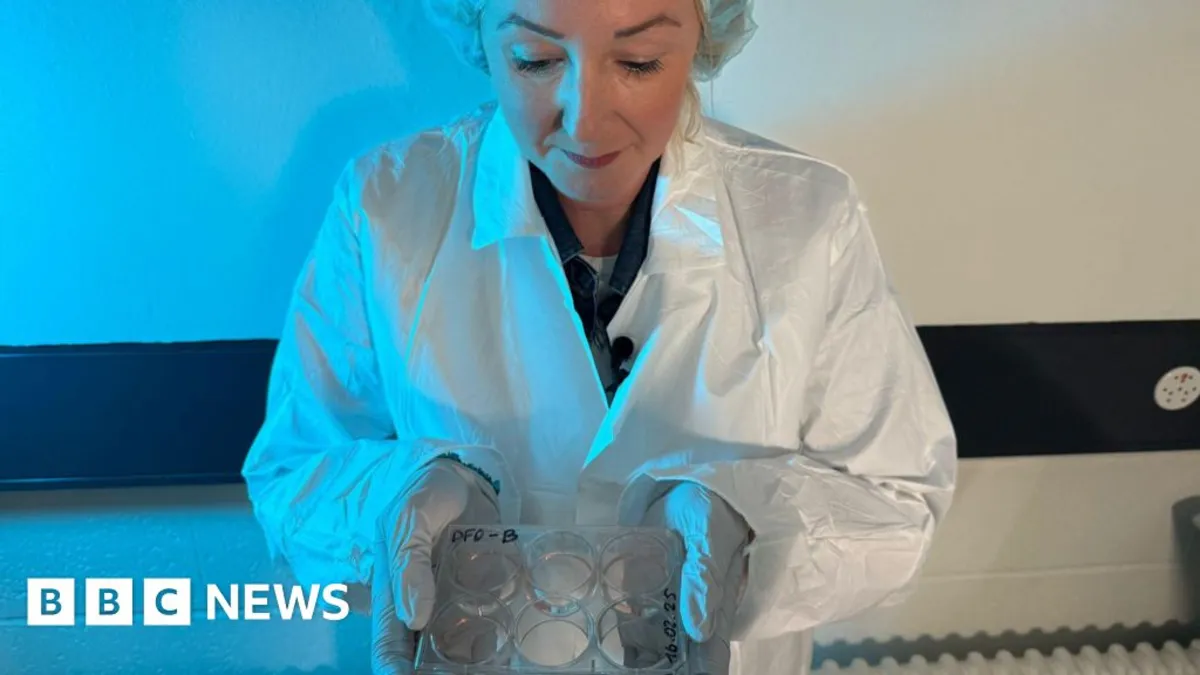
In a groundbreaking development reminiscent of science fiction, a select group of researchers is making significant strides toward creating computers powered by living cells. This innovative field, known as biocomputing, is being spearheaded by a team of scientists in Switzerland, who envision a future where data centers are filled with living servers that mimic the learning capabilities of artificial intelligence (AI) while consuming a fraction of the energy used by current technologies.
Dr. Fred Jordan, co-founder of the FinalSpark lab, shared his ambitious vision for biocomputing during my visit. Traditionally, we think of computers in terms of hardware and software, but Dr. Jordan and his colleagues refer to their creation as wetware. This term describes the process of developing neurons into clusters known as organoids, which can then be connected to electrodes for use as mini-computers.
Dr. Jordan acknowledges that the concept of biocomputing may seem strange to many. He noted, "In science fiction, people have been living with these ideas for quite a long time." By utilizing neurons as tiny machines, researchers are rethinking our understanding of the brain and its capabilities.
At FinalSpark, the biocomputing process begins with stem cells sourced from human skin cells, which are obtained from a clinic in Japan. The identities of the donors remain anonymous; however, Dr. Jordan mentioned that their lab frequently receives offers from potential donors. "We have many people who approach us," he stated, emphasizing the importance of selecting stem cells from official suppliers to ensure high quality.
During my visit, Dr. Flora Brozzi, a cellular biologist at FinalSpark, showed me a dish containing small white orbs—these are the lab-grown mini-brains made from living stem cells. Although these organoids lack the complexity of a full human brain, they share the same fundamental building blocks. After several months of cultivation, the organoids are ready to be connected to electrodes and tested for their responsiveness to simple keyboard commands.
The testing process involves sending electrical signals through the electrodes to observe the organoids' activity. In a simple experiment, I pressed a key, sending an electric signal, which resulted in a visual representation of the organoid's response on a screen, resembling an EEG graph. While the organoids sometimes failed to respond, other times, they exhibited a distinct burst of activity, prompting questions about their internal processes. Dr. Jordan remarked, "There is a lot we still don't understand about what the organoids do and why."
The ultimate goal for Dr. Jordan and his team is to stimulate the learning capabilities of these biocomputers, allowing their neurons to adapt and perform specific tasks. "For AI, it’s always the same thing," he explained. "You give some input, and you want some output." This could pave the way for revolutionary applications in various fields.
Unlike traditional computers that only require a power supply, biocomputers present unique challenges. According to Simon Schultz, a professor of Neurotechnology at Imperial College London, organoids do not have blood vessels to provide essential nutrients, making their longevity a significant concern. "We don't yet know how to make them properly," he admitted. FinalSpark has achieved a milestone where their organoids can survive for up to four months, but they have also observed unsettling patterns of heightened activity before the organoids' demise.
FinalSpark is not alone in its exploration of biocomputing. Australian firm Cortical Labs made headlines in 2022 by getting artificial neurons to play the classic video game Pong. Meanwhile, researchers at Johns Hopkins University are developing mini-brains to study information processing for drug development related to neurological conditions such as Alzheimer’s and autism. Dr. Lena Smirnova, leading the research at Johns Hopkins, believes that while wetware is scientifically promising, it is still in its early stages and should complement existing silicon-based technologies rather than replace them.
As the technology continues to evolve, Dr. Jordan remains captivated by its sci-fi origins. "I've always been a fan of science fiction," he shared. "Now I feel like I'm in the book, writing the book." The journey of biocomputing is just beginning, with the potential to revolutionize not only computing but also our understanding of life and intelligence.
For those interested in the latest advancements in technology, consider signing up for our Tech Decoded newsletter to stay updated on the world's top tech stories and trends.